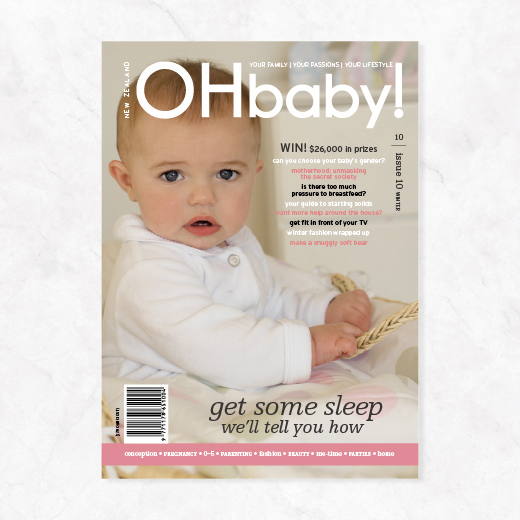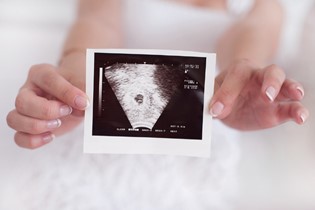Pelvic flaw

Discussing pelvic floor problems is never going to be sexy. However, pelvic floor dysfunction is common and can cause significant distress for many women. Lisa Yates explains what exactly goes wrong and who is at risk.
You need only to attend a post-baby coffee group to realise that many women are desperate to discuss their pelvic floor concerns. Realising that things "down there" are not quite the same after childbirth can be quite confronting, especially to women who are used to being in control of their health and fitness.
Anatomy first
The pelvic floor is a group of muscles, ligaments, and connective tissue that forms the "floor" of the bony pelvic outlet. The main function of these muscles is to provide support for the organs inside the pelvis (the bladder, uterus and the bowel). The pelvic floor also helps maintain continence giving you conscious control over your bladder and bowel.
It sometimes helps to imagine the pelvic floor as a small round trampoline, which has the potential to move up and down. In women, there are three passages running through these muscles. Closest to the front is the urethra (where you pass urine), the vagina is in the middle, and then the anus or back passage. The pelvic floor muscles normally wrap around these holes, helping to keep them shut. Although these muscles are hard to see, they function much the same as the muscles in your arms and legs, and can be consciously controlled and trained.
Another function of the pelvic floor muscles is to work with the deep abdominal and back muscles to help support the spine. They also provide vital support for the baby during pregnancy and assist with the process of birth.
While you might not want to think about it with a new baby, the pelvic floor muscles are also important for sexual function in both men and women, as they help to provide sensation and also contract involuntarily during orgasm.
Am I at risk?
One in three women who have ever had a baby will suffer urinary leakage. Or, to put it differently, 600,000 New Zealanders and 3.8 million Australians are affected by incontinence; 70% of whom are women.
Anyone who has given birth vaginally probably isn't surprised to hear that up to 38% of women experience urinary incontinence after giving birth. A recent large study looked at 12,000 women and found that 31% of women still reported urine leakage six months following delivery.
Scary as these statistics may be, as a woman, there really is no escaping this possibility. The more informed you are about potential problems then the better equipped you will be to deal with them should they arise.
What goes wrong?
The pelvic floor muscles are stretched and weakened by the processes of pregnancy and childbirth. Hormonal changes and the added weight of pregnancy can contribute to urinary incontinence while pregnant. Studies reveal around 60% of women actually experience leaking of urine during pregnancy.
Certain obstetric factors place women at an increased risk of pelvic floor damage. These include: being a first time mum, instrumental births (ventouse or forceps), large babies (over 4kg), a prolonged pushing stage of labour, and severe perineal tearing. While only around 1% of women will actually suffer a third degree tear (from the vagina to the back passage), studies have shown that up to two thirds of these women will suffer subsequent faecal incontinence. This is never a pleasant outcome; the good news is that there is a lot that can be done to effectively treat this condition.
I had a C-section; surely my risk is lower?
Many women think that having a Caesarean means they won't suffer from pelvic floor weakness, but at least 10% of these women still suffer from urinary leakage. Caesarean births carry their own inherent risks and are generally considered more dangerous for the mother. Your abdominal muscles are cut with a Caesarean, and this can cause pain and weakness later on. So while opting for a Caesarean might seem like a way to avoid pelvic floor dysfunction, you might just trade one potential problem for another.
What else can make the pelvic floor weak?
Just as the weight of pregnancy can weaken the muscles, being overweight is also a significant risk factor for pelvic floor weakness. With over half the female population now over-weight, this is an increasing risk factor for pelvic floor weakness.
Chronic coughing, heavy lifting, straining or constipation all put increased downwards pressure on the pelvic floor (remember the trampoline analogy) and are all associated with increased risk of pelvic floor problems. As we get older we are also at an increased risk of pelvic floor dysfunction.
Can the muscles get too tight?
Women are often surprised to learn that occasionally these muscles can also become too tight. For various reasons, the muscles sometimes fail to relax properly and this can cause problems with intercourse and emptying of the bladder and bowel. This is much less common however, and professional help is suggested to aid this problem.
How do I tell if I might have a problem?
Several things that may happen if your pelvic floor muscles are too weak:
- The most frequent symptom is accidentally leaking urine when coughing, laughing, lifting, sneezing or exercising. This is called stress urinary incontinence, and it happens because the muscles are no longer strong enough to keep the urethra or anus shut under the increased pressure.
- You could also find difficulty controlling flatus, or wind.
- Sometimes women find that they feel an urgent need to empty their bladder or bowel. This can lead to a habit of going to the toilet too frequently or going "just in case".
- You might have trouble cleaning yourself after a bowel motion or even find it hard to completely empty your bowel.
- Some women also experience difficulty controlling their bowels and may leak a little after passing a bowel motion.
- You might also experience a sensation of dragging, heaviness or notice a lump or bulging in your vagina. This could be your pelvic organs sagging into the vagina (prolapse) and should always be assessed by a medical professional. This is quite common and while pelvic floor exercises will still be important for management, correct assessment is vital.
If you are experiencing any of the above symptoms, then you should arrange to see a women's health physiotherapist or continence nurse who will be able to assess and diagnose your problems and provide you with an appropriate treatment regime.
Is sex affected by a weak pelvic floor?
Soon after your baby is born, you are very likely to be tired and focused on caring for your newborn. Vaginal tears or bruising can cause pain in your nether regions for some time after delivery. Always talk to your partner about this and only commence intercourse when you feel ready. If pain or discomfort persists then do discuss this with a sensitive health professional such as your midwife or GP.
As mentioned, pregnancy and birth can weaken the pelvic floor. This may decrease your ability to actively squeeze the pelvic floor and could result in decreased sensation and reduced ability to orgasm. The good news however, is that once you learn how to correctly exercise your pelvic floor you can practice this during sex and ask your partner for feedback!
So pelvic floor exercises are the answer?
Yes and no. Regular supervised pelvic floor muscle training has certainly been proven to be effective in strengthening these muscles. One study found that using physiotherapy-based pelvic floor muscle training had an 84% cure rate. However, if you are experiencing any symptoms of pelvic floor dysfunction, then you should see a health professional to ensure correct diagnosis and individualised treatment.
Studies have shown that women find pelvic floor exercises difficult to learn from a booklet so ask your midwife for advice or see a women's health physiotherapist or continence practitioner. They should be able to check your technique and provide feedback. For more information on how to do pelvic floor exercises and tips to check your technique check out this article.
Is general exercise good for pelvic floor weakness?
Exercise is undoubtedly good for your health and may also help to lose excess body fat - which can improve your symptoms. However, even the most well meaning new mums can inadvertently worsen their symptoms with the wrong choice of exercise. Activities such as sit ups, star jumps, weight training and certain Pilates exercises can place too much pressure on a weak pelvic floor and may worsen your symptoms. High impact activities such as running, aerobics and many sports also cause excessive downward pressure on a weak or recovering pelvic floor. Most gym equipment, mainstream exercise classes and DVDs are not designed for women with pelvic floor weakness.
What is safe then?
Try to avoid high impact exercise for a minimum of four months post birth. Enjoy this special early time with your baby and make sure you spend lots of time resting lying down. When you feel ready and able, gradually return to gentle exercises like walking and swimming. Steer clear of abdominal exercises (especially sit-ups). The best exercise for your post-baby tummy is gentle deep abdominal (TVA) exercises. These involve gently flattening your lower tummy muscles without holding your breath. For more information on your deep abdominal muscles read Mind the Gap.
Can I expect improvement?
It may seem overwhelming knowing all the risks, but try not to lose heart. By keeping informed and knowing what to avoid, you'll be less likely to do your pelvic floor any damage. You'll also be better equipped to facilitate a good recovery. Remember that many women recover very well and have no long-term symptoms. Try not to neglect the needs of your body and please seek help from a professional if you do experience symptoms. Ignoring problems won't make them go away. It's much easier to treat a small problem early on than it is to treat a big one down the track.
Further help
- Check out the New Zealand Continence Association website www.continence.org.nz or call the helpline on 0800 650 659. They can provide free pamphlets and contact details of all continence advisors and physiotherapists.
- In Australia, contact the National Continence Helpline on freecall 1800 33 00 66 or visit www.continence.org.au. The National Continence Helpline is staffed by a team of Continence Nurse Advisors who provide confidential information and advice about bladder and bowel control problems.
- Speak with the healthcare professional who is helping you after the birth of your baby. This might be your GP, your specialist or your midwife.
|
Lisa Yates is a mother of two young girls and an experienced physiotherapist with a special interest in women's health. She is passionate about obstetric and continence physiotherapy and is also a women's personal trainer and wellness coach. |

AS FEATURED IN ISSUE 10 OF OHbaby! MAGAZINE. CHECK OUT OTHER ARTICLES IN THIS ISSUE BELOW

















